Idea by
Markéta Březovská and Matthias Stippich
Call for ideas 2016
Reading the Future
Reading the Future
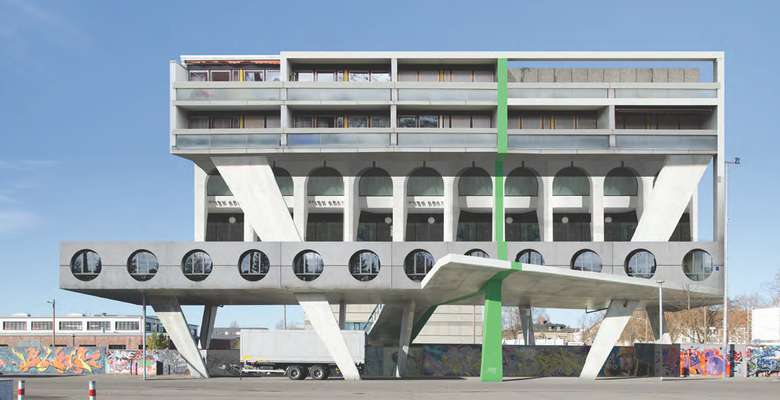
… in order to inform broader public and to start up discussions on potentials and problems that might the future bring, this fantastic issue retrospectively addresses some of the urban and social problems of the past while aspiring to discover the future.
Based on a dramatic scenario of a state of emergency that might have had global or local economic, cultural, climatic or political cause, we arrived to several concepts projected onto the societal and urban development. The bright and dark, funny and sad, smart and silly one-page articles deal with various provocative, impossible, utopian, dystopian or just simply imaginable futures.
The form of a traditional medium of printed newspaper evokes on one hand a nostalgia of slow information transfer, but on the other hand, in contrast to the fast-paced image-oriented digital media and social networks, it stays for a serious attitude, seemingly long lasting value and a classical credibility.
Credit: Neoeclesticism by Lukas Bessai
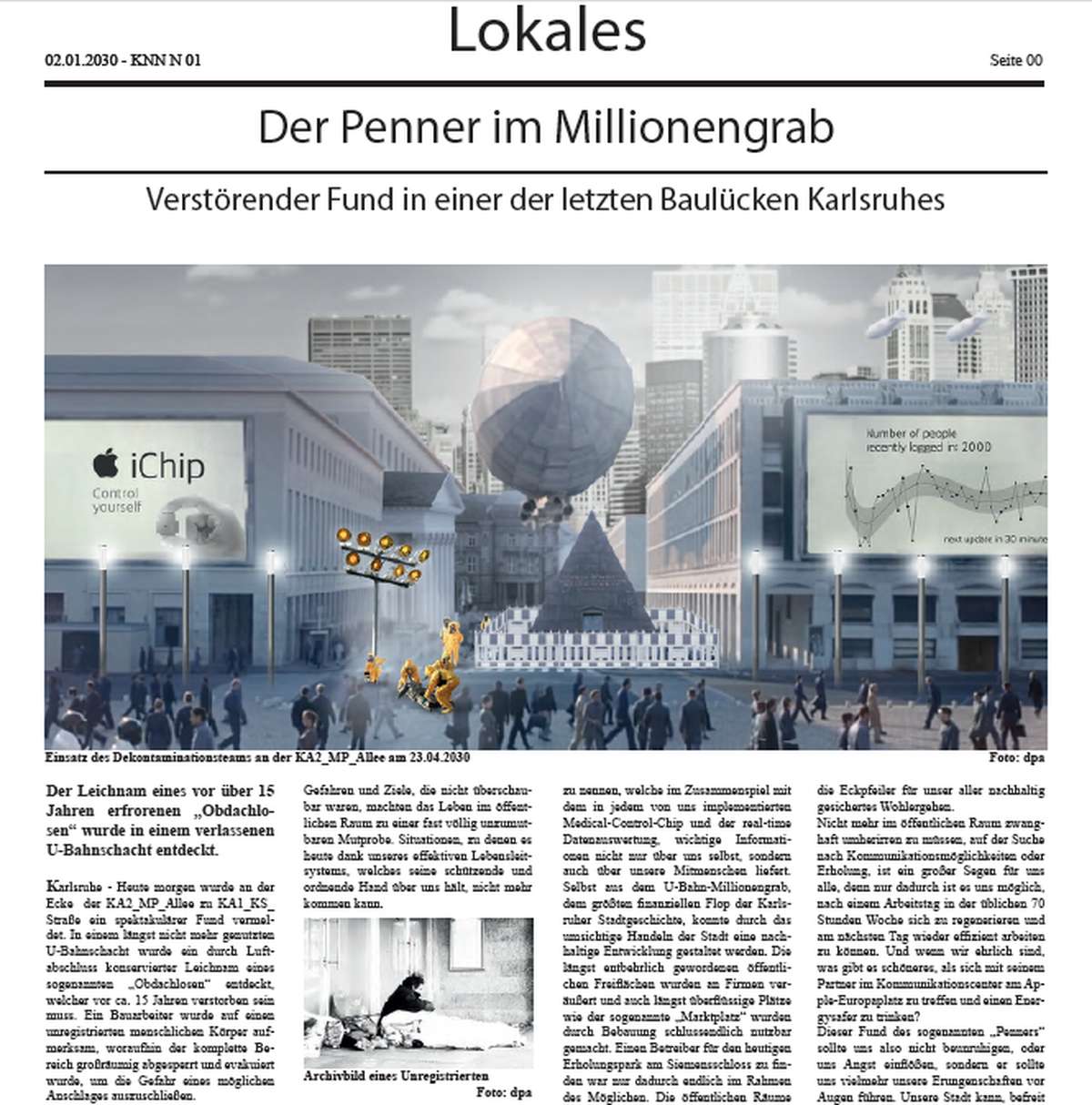
An article in the “Local news” section dealing with the new surveillance system and the controversial project of the on-going infrastructural development in the city center using a metaphor of “A homeless found in the millions grave. Disturbing discovery in one of the last vacant lots Karlsruhe”. Authors: Sarah Menzer and Simon Seitz

Local News dealing within the “Economy” section with several energetic and political issues: Half of the pumped storage power plants in the Black Forest have been finished. Authors: Lukas Reichert and Alina Witthaus
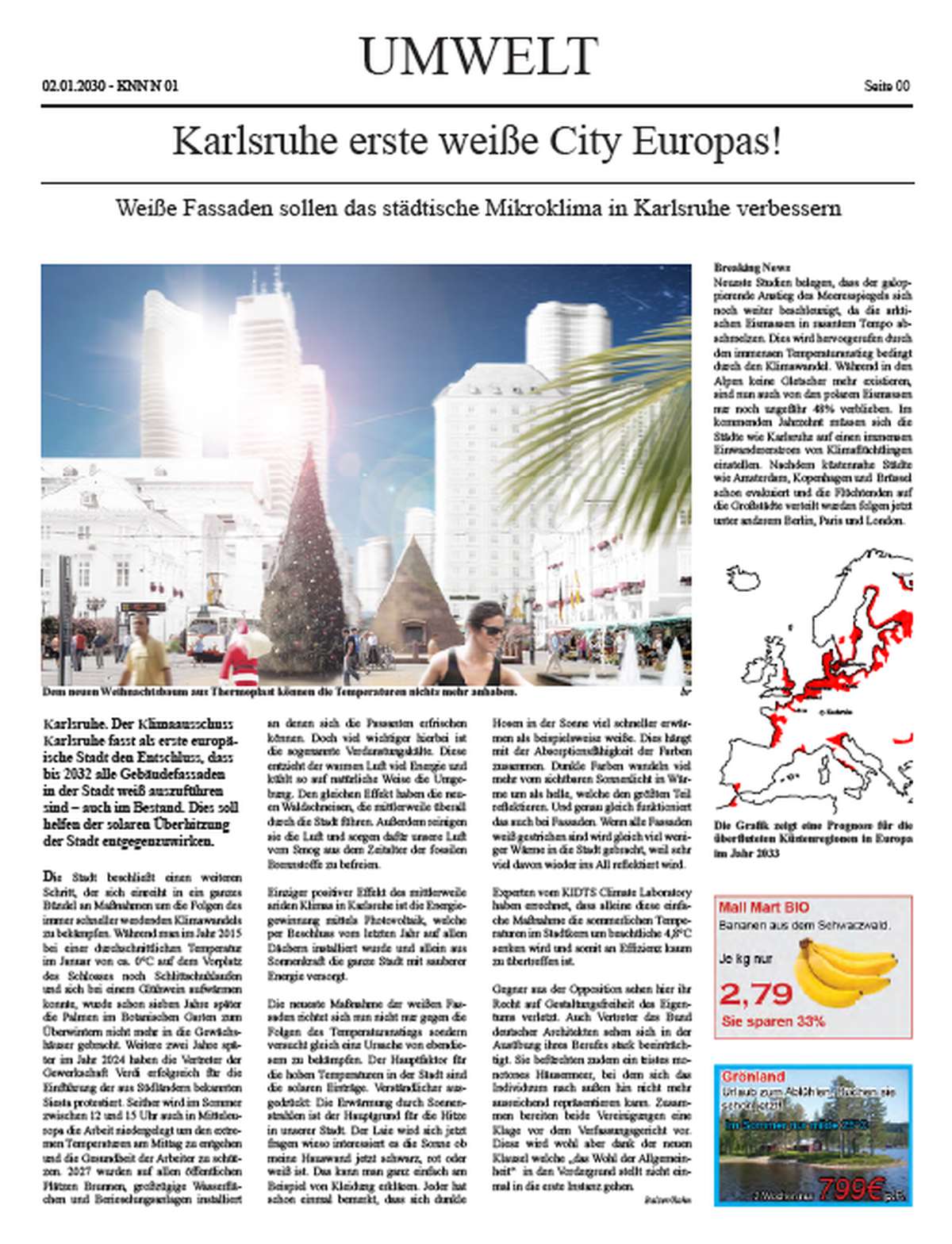
In the “Environment” section, the “First White City in Europe. White façades are intended to improve the urban microclimate in Karlsruhe” article addresses, next to the global climatic issues and local bio-bananas also the visual appearance of architecture in the future. Authors: Robin and Balzer Florian Rahn
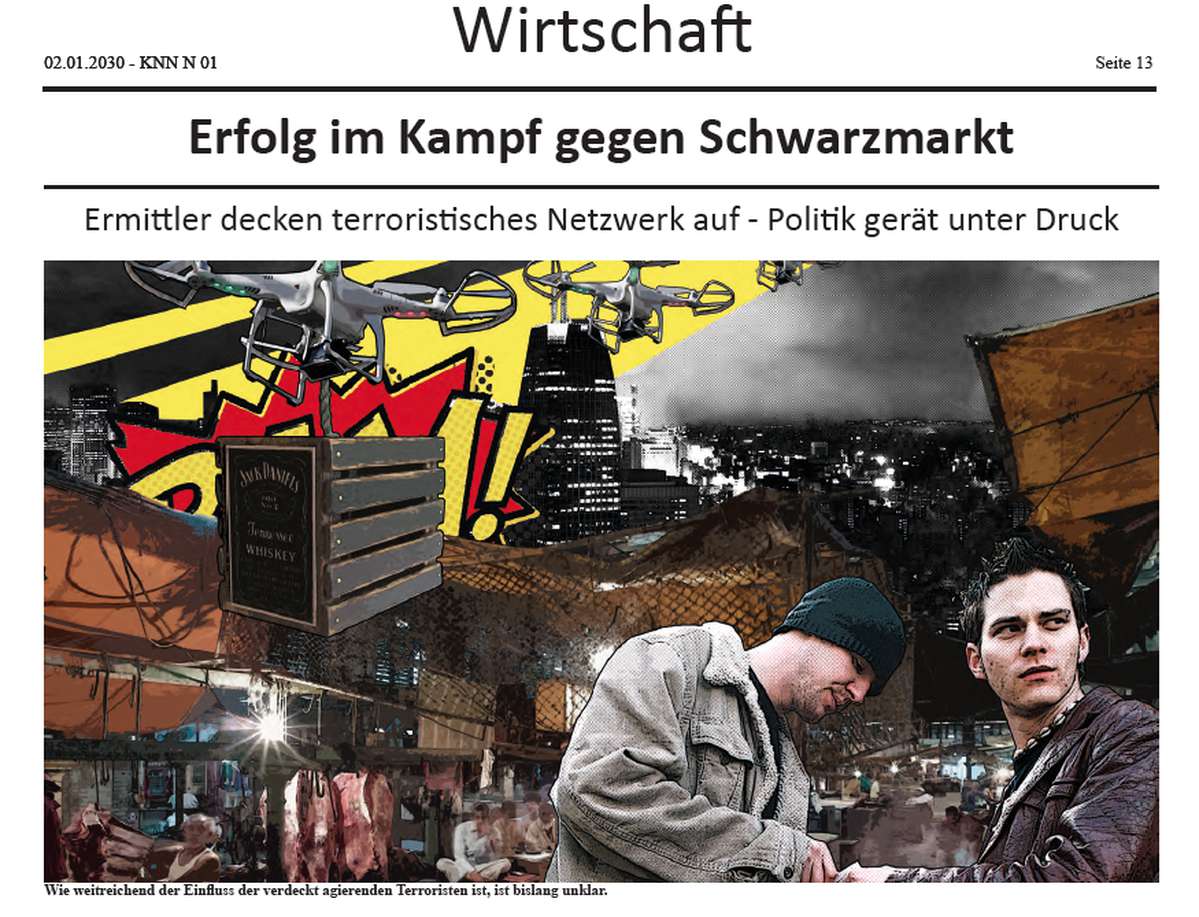
In the section “Politics”, the article “Success in fighting the black market. Investigators uncovered terrorist network. Politics under pressure” addresses issues of the omnipresent health- and drug-mafias that rose together with the surveillance politic agendas on human behavior and health conditions. Authors: Ruben Dietz and Thorben Dukar

In the “Agriculture” section, the “Mad cow disease: Karlsruhe Castle Beef wins BestMeatAward in New York and displaces Kobe beef of the international meat markets” deals with the question of local/global production and romantic return to medieval-countryside nature of the cities. Authors:
Julia Ochmann and Christine Kohlmann
Reading the Future
Reading the Future

… in order to inform broader public and to start up discussions on potentials and problems that might the future bring, this fantastic issue retrospectively addresses some of the urban and social problems of the past while aspiring to discover the future.
Based on a dramatic scenario of a state of emergency that might have had global or local economic, cultural, climatic or political cause, we arrived to several concepts projected onto the societal and urban development. The bright and dark, funny and sad, smart and silly one-page articles deal with various provocative, impossible, utopian, dystopian or just simply imaginable futures.
The form of a traditional medium of printed newspaper evokes on one hand a nostalgia of slow information transfer, but on the other hand, in contrast to the fast-paced image-oriented digital media and social networks, it stays for a serious attitude, seemingly long lasting value and a classical credibility.
Credit: Neoeclesticism by Lukas Bessai

An article in the “Local news” section dealing with the new surveillance system and the controversial project of the on-going infrastructural development in the city center using a metaphor of “A homeless found in the millions grave. Disturbing discovery in one of the last vacant lots Karlsruhe”. Authors: Sarah Menzer and Simon Seitz
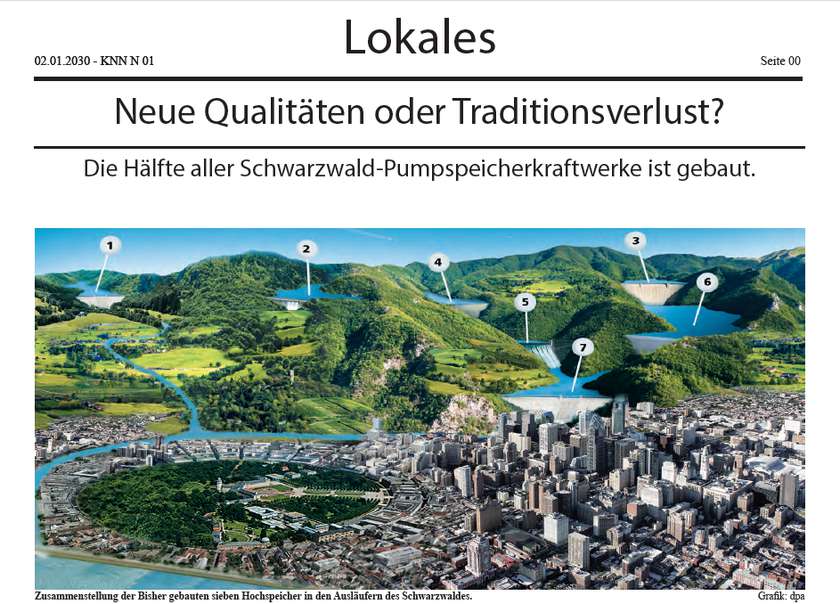
Local News dealing within the “Economy” section with several energetic and political issues: Half of the pumped storage power plants in the Black Forest have been finished. Authors: Lukas Reichert and Alina Witthaus
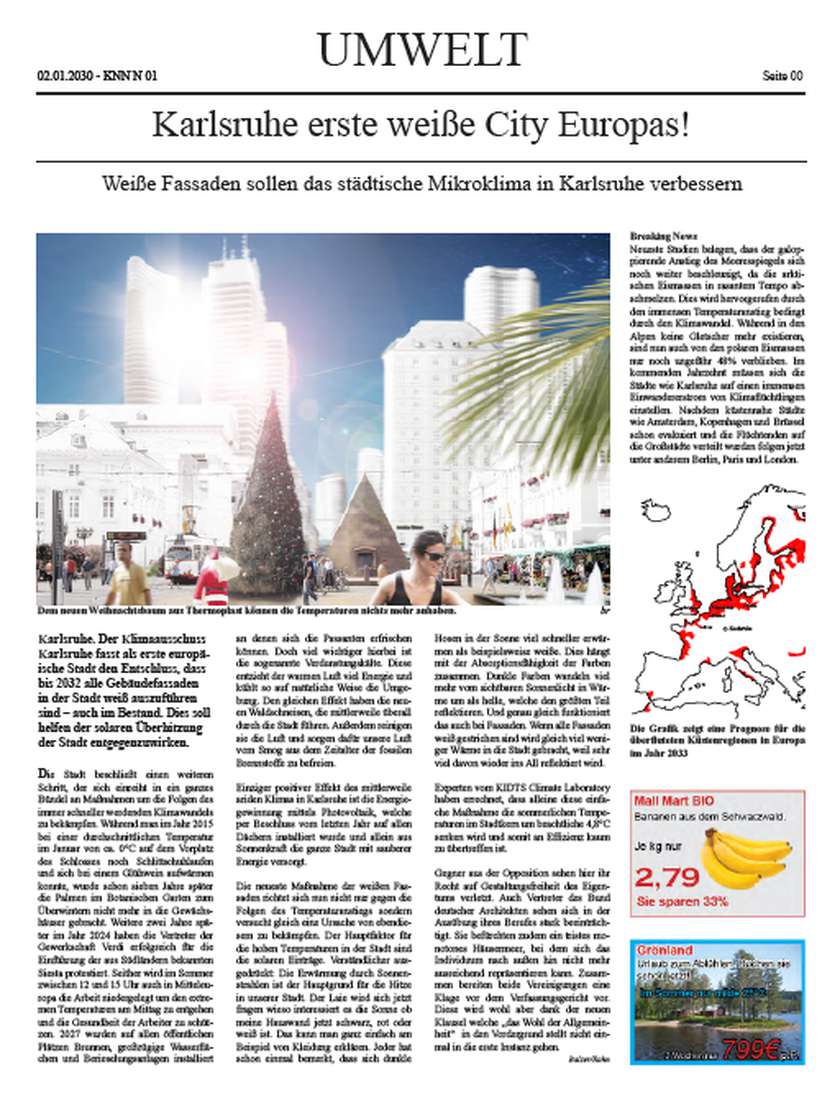
In the “Environment” section, the “First White City in Europe. White façades are intended to improve the urban microclimate in Karlsruhe” article addresses, next to the global climatic issues and local bio-bananas also the visual appearance of architecture in the future. Authors: Robin and Balzer Florian Rahn
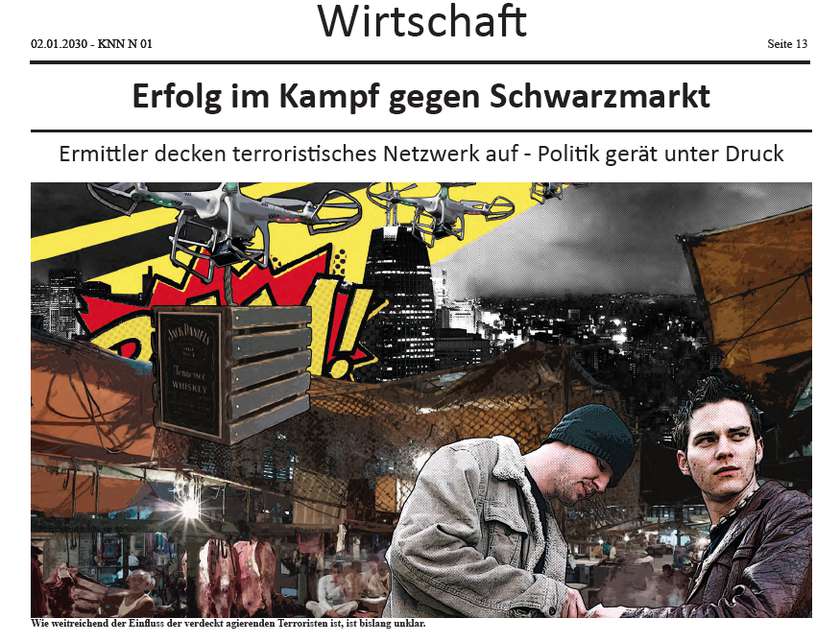
In the section “Politics”, the article “Success in fighting the black market. Investigators uncovered terrorist network. Politics under pressure” addresses issues of the omnipresent health- and drug-mafias that rose together with the surveillance politic agendas on human behavior and health conditions. Authors: Ruben Dietz and Thorben Dukar
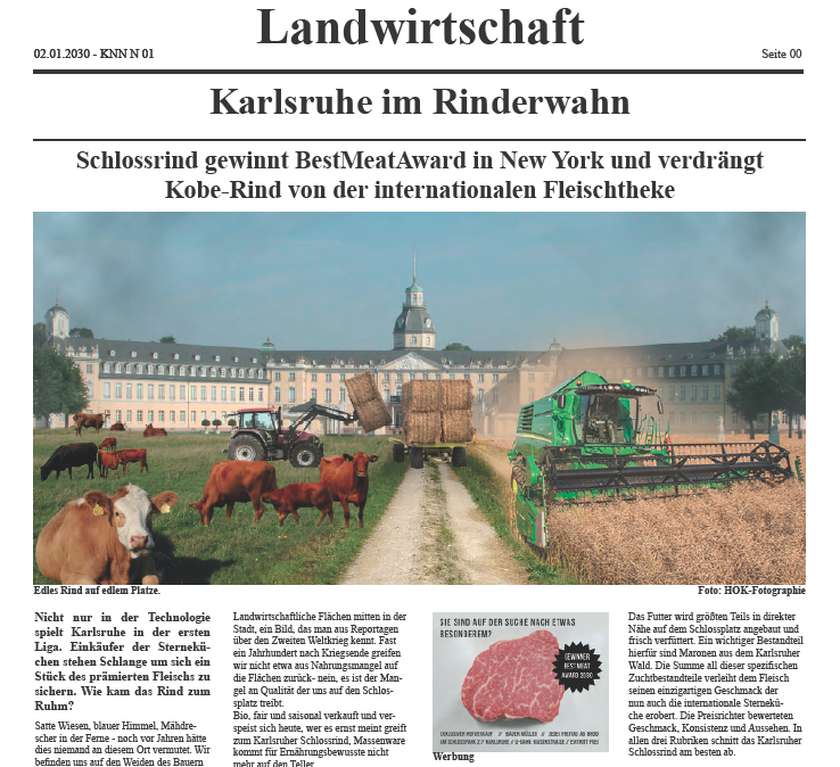
In the “Agriculture” section, the “Mad cow disease: Karlsruhe Castle Beef wins BestMeatAward in New York and displaces Kobe beef of the international meat markets” deals with the question of local/global production and romantic return to medieval-countryside nature of the cities. Authors:
Julia Ochmann and Christine Kohlmann